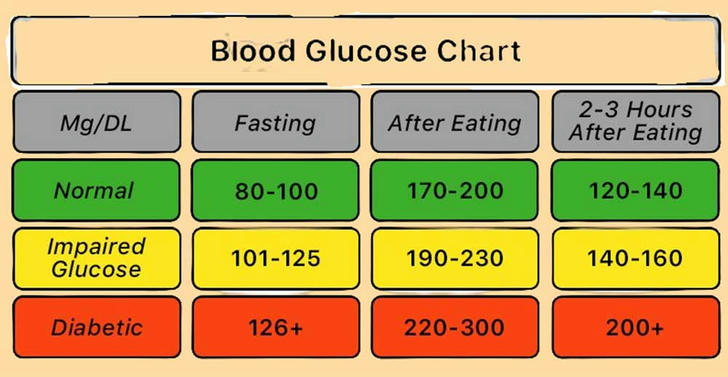How to Quickly Stabilize High Blood Sugar: Effective Steps for Blood Glucose Above 300 ⭐
Hyperglycemia, especially blood sugar levels above 300 mg/dL, is an urgent health concern that requires immediate attention. When blood glucose spikes to such high levels, the risk of complications like diabetic ketoacidosis increases significantly. This article explores the causes and risks of hyperglycemia, outlines early warning signs, provides practical steps for rapid stabilization, recommends foods that help lower glucose levels, and shares strategies for long-term management to prevent future episodes.

🔍 Understanding Hyperglycemia: Causes and Risks of Elevated Blood Sugar
Hyperglycemia occurs when the body lacks sufficient insulin or cannot use it effectively. Insulin is the hormone responsible for moving glucose from the bloodstream into cells for energy.
Diabetes Type Description Type 1 Pancreas stops producing insulin Type 2 Body's response to insulin becomes impaired ⚠️ Several factors can trigger hyperglycemia, including:
- 🍚 Eating more carbohydrates than planned
- 🛋️ Exercising less than usual
- 😥 Stress from illness or emotional factors
- 🌅 The dawn phenomenon: natural early morning hormone surge
🩺 Persistently elevated blood sugar above 300 mg/dL indicates poor glucose control and increases the risk of serious complications like diabetic ketoacidosis, which requires urgent medical care.
📌 Recognizing Symptoms: Early Signs of High Blood Sugar to Monitor
Identifying early symptoms helps prevent further deterioration. Common signs of hyperglycemia include:
- 🚻 Frequent urination
- 💧 Increased thirst
- 🧪 High glucose levels in urine
- 😫 Fatigue
- 👁️ Blurred vision
- 🤕 Headaches
💡 Regular monitoring of blood glucose is essential because symptoms can vary or resemble other conditions. Checking blood sugar levels multiple times daily helps detect dangerous elevations early and signals when to seek medical advice or adjust treatment.
✅ Immediate Actions: What to Do When Blood Sugar Exceeds 300 mg/dL
When blood sugar surpasses 300 mg/dL, quick and careful action is vital:
- 🔥 Check urine for ketones: Presence indicates fat breakdown, a warning sign of ketoacidosis.
- 🏃♂️ Avoid exercise if ketones are present: Physical activity may worsen blood glucose levels in this state.
- 💦 Hydrate well: Drink plenty of water to help kidneys eliminate excess glucose.
- 🥗 Adjust food intake: Reduce carbohydrate intake, preferably under healthcare guidance.
- 👨⚕️ Consult a doctor: If hydration and dietary changes do not lower levels, medication or insulin adjustment may be necessary.
💡 Always carry a medical ID indicating diabetic status to assist emergency responders during critical episodes.
🎁 Dietary Choices: Foods That Help Quickly Lower Blood Glucose
Managing blood sugar through diet involves:
Recommended Foods Benefits Complex carbohydrates (whole grains, lentils, legumes) High fiber slows glucose absorption Lean proteins Promote satiety and energy stability Unsaturated fats Support balanced blood sugar levels Water Aids kidney function and glucose elimination ❌ Avoid simple sugars found in sodas, candies, and desserts, which cause rapid spikes.
While no single food instantly normalizes blood sugar, balanced meals with slow-digesting carbs and hydration provide effective and sustainable glucose control.
👨👩👧👦 Age-Specific Guidance: How to Handle High Blood Sugar Across Different Age Groups
Physical condition and comorbidities differ across age groups; managing high blood sugar requires individualized consideration.
Age Group Characteristics & Special Considerations Recommended Strategies 41-50 years old Often in prime working years; high stress, fast pace, potential neglect of health management. ✅ Emphasize regular monitoring, use smart device reminders.
✅ Focus on stress management (e.g., meditation, short breaks).
✅ Ensure 150 mins of moderate exercise weekly, even when busy.51-60 years old Metabolism noticeably slows; chronic diseases (e.g., hypertension) may appear; women may experience menopause (hormonal changes affect血糖). ✅ Annual comprehensive check-ups, closely monitor blood sugar, lipids, blood pressure.
✅ Refine diet, strictly control carbohydrate quantity and quality.
✅ Discuss impact of menopausal hormonal changes on blood sugar with doctor.61-70 years old Higher risk of multiple chronic conditions; muscle mass begins decreasing (affects glucose metabolism); likely on multiple medications. ✅ Comprehensive management of blood sugar, BP, lipids; regular kidney function checks.
✅ Add resistance training (e.g., light weights, squats) to maintain muscle mass.
✅ Keep detailed medication list, review with doctor/pharmacist to avoid interactions affecting血糖.71-75 years old Further decline in physical function; increased hypoglycemia risk; need to balance efficacy and safety. ✅ Set individualized blood sugar targets, possibly relaxed; strictly prevent hypoglycemia.
✅ Choose safe exercise forms (e.g., walking, Tai Chi); prevent falls.
✅ Ensure balanced, easy-to-chew/digest diet; adequate protein to prevent muscle loss.76-80 years old Increased risk of cognitive decline; may forget medications or insulin. ✅ Use weekly pill organizers or family assistance for medication safety.
✅ Simplify treatment regimen for easier adherence.
✅ Monitor cognitive function; seek medical help for significant memory decline.80+ years old Often frail; frequent polypharmacy; very poor tolerance for hypoglycemia. ✅ Primary goal: avoid hyperglycemia emergencies & severe hypoglycemia; prioritize quality of life.
✅ Blood sugar targets should be highly individualized, follow doctor's orders.
✅ Enhance daily care; ensure adequate hydration/nutrition; prevent triggers like infection.🌟 Key Reminder: Regardless of age, seek immediate medical attention if blood sugar persistently exceeds 300 mg/dL or if signs of ketoacidosis appear (e.g., nausea, vomiting, drowsiness, fruity-smelling breath).
📈 Long-Term Management: Preventing Hyperglycemia with Lifestyle and Medical Care
Sustained control involves consistent lifestyle and medical strategies:
- 🏃 Exercise regularly: At least 150 minutes of moderate activity weekly improves glucose usage by muscles.
- 🧘♂️ Manage stress: Reducing stress supports balanced blood sugar.
- 🥗 Balanced diet: Follow healthy eating patterns aligned with medical advice.
- 💊 Follow medication regimens: Ensure adherence to prescribed treatments.
- 📊 Frequent monitoring: Detect trends and adjust treatment with healthcare providers.
- 💊 Special considerations: For those on steroids or other medications raising blood sugar, closer monitoring is critical.
Proactive diabetes management reduces emergency risks, enhances health, and maintains quality of life. Early detection and timely intervention remain essential.
💬 Implementing these steps and maintaining vigilance can empower individuals to stabilize dangerously high blood sugar quickly and sustainably.
